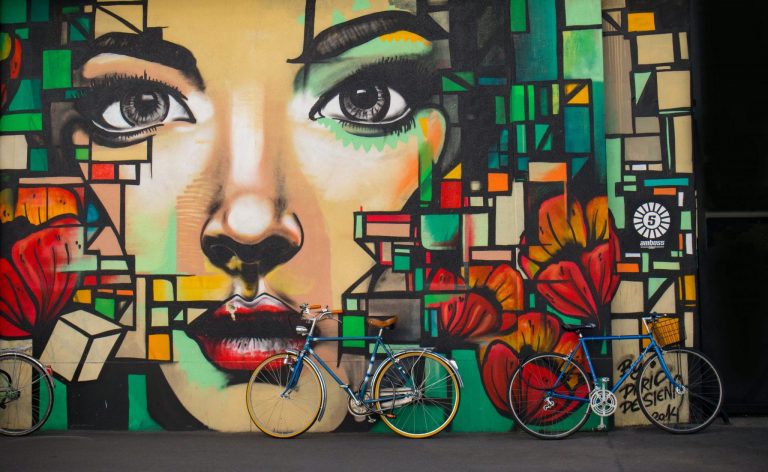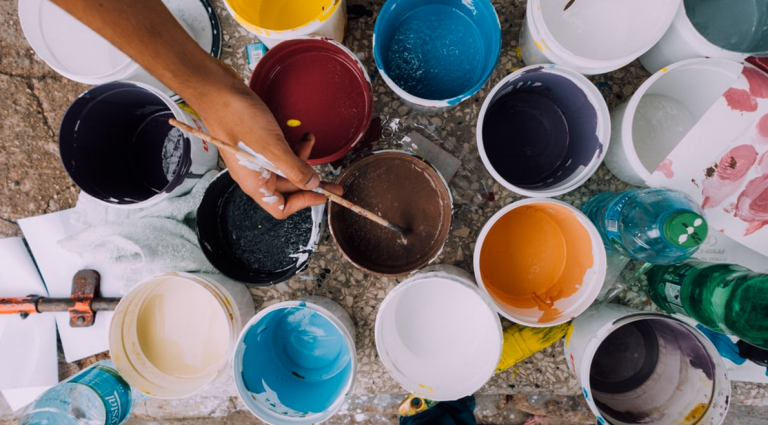Creative arts programs have been one focal point of a traditional liberal arts education which has been the standard for student growth worldwide. Art as an applied teaching technique stemmed from the disciplines of Ancient Greeks who emphasized liberal arts education for the essential preparation for effective participation in public life. Some creative arts like drawing or music always had a secondary role in enhancing a sensory perception in the Hellenistic period. Fast forward many centuries, art education is a form of a vocational subject. Public school and private education providers alike have integrated art into their curriculums as a form of developmental aid in students. Under the No Child Left Behind Care Act, arts have been mandated as a core course, so many public schools have sophisticated intra and after-school activities for students inclined to learn about creative arts. However, some schools don’t offer art programs, so art educators seek out studio spaces, create schedules and engage with communities that lack creative reflection. Participating in such creative arts programs –visual or performing – can have many positive effects beyond self-expression. Platforms like teen art programs allow their participants to evolve as artists and academic achievers. Creative art programs also help students develop real-life skills that could translate to their careers.
Platforms for Self Expression
Teen arts programs offer platforms for youth to express themselves in positive ways. Alex Korb, a neuroscientist at UCLA, conducted experiments that show how the brain can benefit when we express ourselves. In his fMRI study, participants viewed pictures of people with emotional facial expressions, and their brains reacted by replicating the emotion depicted in the image. There is a clear correlation between aesthetic experiences and improvement in mental as well as physical health. Whether it is painting, theatre, music, dancing, or photography, creative arts provide an outlet for teens to communicate thoughts, feelings, and emotions constructively. Studies prove that participating in a creative arts activity can reduce stress and help teens cope with pressure, especially those dealing with challenging circumstances. An arts-integrated curriculum that asks students to draw or sing as part of the learning process may enhance their ability to recall scientific principles or vocabulary, which is especially beneficial for students who may lag behind their peers. Furthermore, artistic expression is also a pathway for identity growth. Creative individualism is key to becoming a more responsible adult.
Boost to Student Profile
Enrolling in a teen arts program helps youth explore extracurricular interests and lead to lifelong interests or even careers. A teen who is not gifted academically may excel at creative arts, making a massive difference to their self-esteem and academic performance. Innovative arts programs improve scholarship by molding students into better versions of themselves. For example, learning music has ties to accentuated memory function and cognition. Additionally, art education enhances communication skills and a more profound cultural understanding. Overall, creative arts turn students into model citizens. It is a fact that students who study art are four times more likely to be recognized for academic achievement and three times more likely to be awarded for school attendance. According to the National School Boards Association, curricular and extracurricular art studies and activities help keep high-risk dropout students in school. Especially in marginalized communities, teens may be able to break the cycle of discontinuing education and reaching a higher socioeconomic level. Students that engage in creative learning tend to be better performing in traditional subjects. Arts Education Partnership concluded that students who had previously had a music course had better standardized test scores such as the SAT and better literacy/comprehension scores.
Platforms for Building Valuable Skills
Private and public providers alike try to harness artistic creation for its extraordinary ability to afford the tensions of ethical decision-making within the self-imposed constraints of materiality, which could be useful for real-world problem-solving. Creative arts-focused after-school programs are great platforms for teens to develop valuable skills that serve a lot of purposes in the real world. Teens learn necessary social capabilities like negotiation, problem-solving, and teamwork to serve them throughout their lives. More than ever, employers are looking for individuals who can distinguish themselves with creative initiative, a vital ability grasped as a result of engaging in art education. Jennifer Gimzewski of the Salem Art association states that by “using the arts to educate our children, we are allowing them to absorb knowledge in a way that lasts — a way that encourages them to be lifelong learners.” An art class is an immersive experience where teens channel their innovative potential into a single piece of work. This exercise is very much similar to creativity that happens at firms in the corporate world. Creative arts programs may lead to better workforce opportunities and help teens stand out in competitive job markets.

Leverage your interest in Arts for your long term benefit!
Overall, introducing creative art programs as a requisite in public school curriculums and promoting after-school private art education by providers is exceptionally beneficial to teenagers because it gives them a space for personal expression, which nurtures their decision-making abilities. Students who engage in fine or applied arts are statistically more inclined to perform better on standardized tests and exceed academic benchmarks. Furthermore, as a byproduct of creative arts, better learners and thinkers become job seekers; the market solutions in many industries are driven forward by a new generation of human capital. Teenage art programs are simply a mandatory tool to generate societal progress. The youth cannot neglect them due to their utility in encouraging maturation. Students who might have a disposition towards artistry should pursue their interests because of lasting positive outcomes and externalities.
About Spotivity
Be #neverbored again by using the spotivity app and find activities that fit your needs. We help you find programing that can lead to your passion. Whether that is an art program to practice graffiti, a sports program to engage in competition, an education support class to improve your grades, or just finding someone to talk to – spotivity has your back. Backed by research and continually informed by users, spotivity is the tool to help you unlock your world and expand the list of options you can take advantage of.




